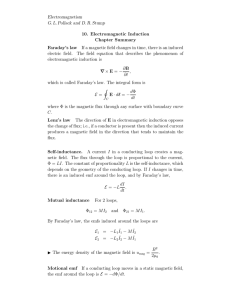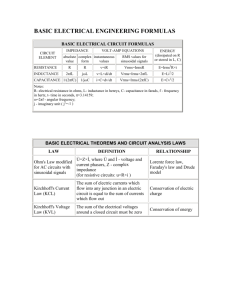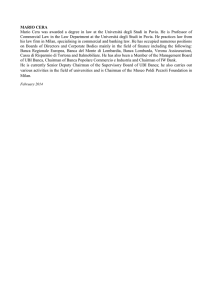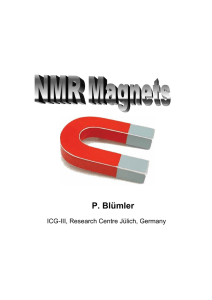2011_12_05_Meeting
advertisement
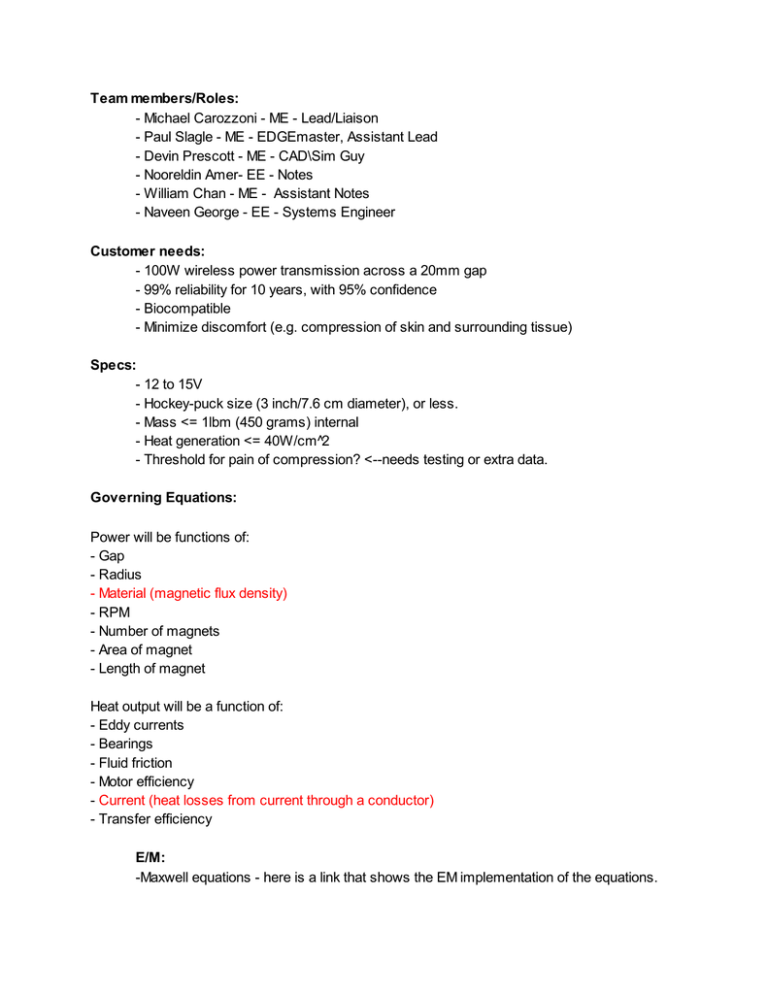
Tea e be /R e : - Michae Ca i - ME - Lead/Liai - Pa S ag e - ME - EDGE a e , A i a - De i P e c - ME - CAD\Si G - N e di A e - EE - N e - Wi ia Cha - ME - A i a N e - Na ee Ge ge - EE - S e E gi ee C e eed : - 100W i e e e a i i ac - 99% e iabi i f 10 ea , i h 95% c - Bi c a ib e - Mi i i e di c f (e.g. c e i Lead a 20 fide ce f S ec : - 12 15V - H c e - c i e (3 i ch/7.6 c dia e e ), - Ma <= 1 b (450 g a ) i e a - Hea ge e a i <= 40W/c ^2 - Th e h d f ai f c e i ? <-- eed G e i gE ai i a d e di g i e) . e i g e a da a. : P e i be f c i - Ga - Radi - Ma e ia ( ag e ic f - RPM - N be f ag e - A ea f ag e - Le g h f ag e f: de i ) Hea i be a f c i f: - Edd c e - Bea i g - F id f ic i -M efficie c - C e (hea e f c e - T a fe efficie c E/M: -Ma e e ga ai h - he e i a i gh a c ha d c h ) he EM i e e ai f he e ai . - http://hyperphysics.phy-astr.gsu.edu/hbase/electric/maxeq.html#c2 - I recommend this site for further explanations of the principles of E/M circuits: http://galileo.phys.virginia.edu/classes/109N/more_stuff/Maxwell_Eq.html - Gauss s Law - Electricity - ∫ E · dA = ρ εo = 4Πkq - Magnetism - ∫ B · dA = 0 -Biot–Savart s Law - The relationship between the current through a wire and the magnetic field. This will mostly relate to building electromagnets. - B = ∫ μ I dl × r 4Π r 3 - Ohm s Law - V= IR - Kirchoff s Law - is the conservation of charge and electrical energy. - Current - The current entering a node must equal the current leaving a node. ∑i = 0 - Voltage - The sum of all voltages (potential differences) in a closed circuit is equal to zero. ∑ v = 0 Mecha ical: - Heat Transfer (general) Q = I 2 R * t Joules First Law Q = k *A*T -Thomson Effect - Peltier Effect / Heat (less likely to be encountered) - Newton s laws τ = Iα - Pressure P ressure = F /A - Fluid Friction τ = μ du d - Power Generation P = τ = iV - Generator efficiency and operation. -needs to ramp up to produce 100W by one minute and stay there for 1~2 hours =k i τ act = ητ nom - Magnetic Force 2 2 2 2 +R ) 1 F = [ B A (L ][ 2 + ( L2 1 +2L) 2 −( 2 ] +L) 2 Equal cylindrical magnets where A is surface area (m^2) is pearmeability of space (4 B is magnetic flux density (T) L is length of magnet (m) R is radius of magnet (m) x is seperation distance (m) http://en.wikipedia.org/wiki/Magnet e-7 T*m/A) - quantify effect of varying load on generator I/O F nc ion : Power Output = f( distance, radius, material of magnet, rpm, number of magnets, medium, area of magnet, length of magnet) Heat Generation = f( eddy currents, bearings, fluid friction, motor efficiency, current and resistance, transfer efficiency) Benchma king: - Current Technology - Wireless power a. MIT Prof. Solja ić’s wireless energy transfer via resonance in alternating magnetic fields i. company created based on the technology: http://www.witricity.com/index.html 1. basics behind technology: http://www.witricity.com/pages/technology.html 2. applications (scroll down to see medical applications): http://www.witricity.com/pages/application.html ii. demo video on ted.com: http://www.ted.com/talks/eric_giler_demos_wireless_electricity.html iii. bbc news interview with Giler: http://news.bbc.co.uk/2/hi/technology/8165928.stm - Wireless mats for charging mobile phones http://www.powermat.com/ - Current medical devices just - This source helps clarify the confusion on where the batteries are. It seems the batteries are external and charged normally. My guess is that we are trying to transfer the power to a DC motor from a DC source. - http://my.clevelandclinic.org/heart/disorders/heartfailure/lvad_devices.aspx Sched le: - WEEK 3 (Per Hanzlik s e-mail): P e en a ion will contain Customer Needs Engineering Specs System Level proposal= preliminary block diagrams, sketches etc.... Top Ten Risks A Preliminary Work Breakdown Structure= who is doing what Plans for weeks 4, 5 leading up to your system level reviews at the end of week 5.
